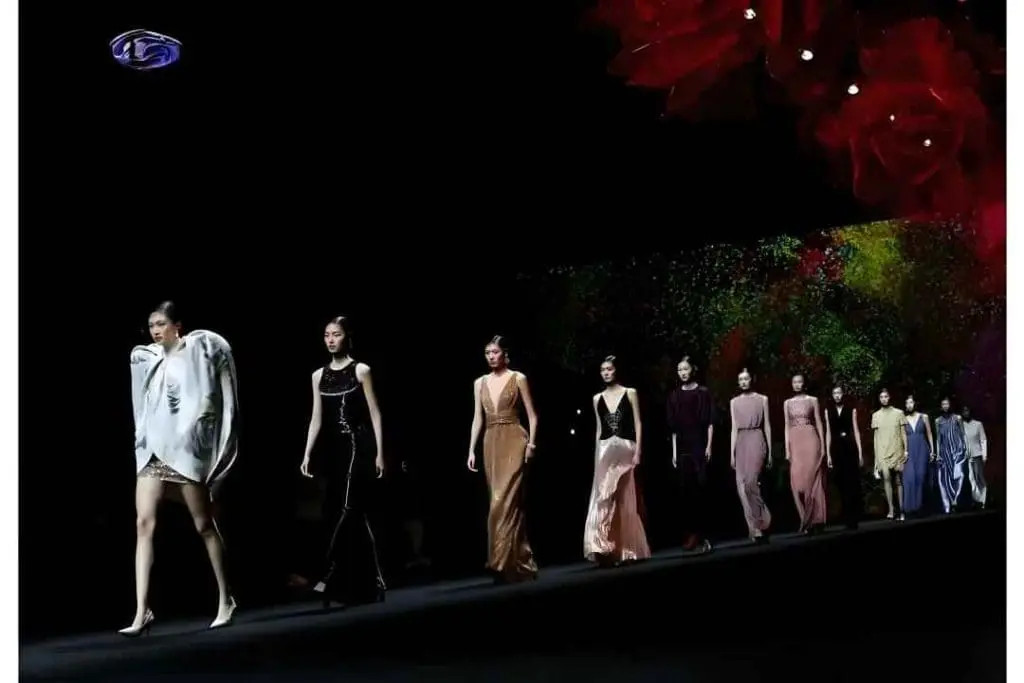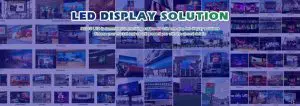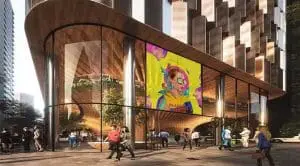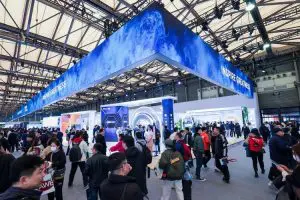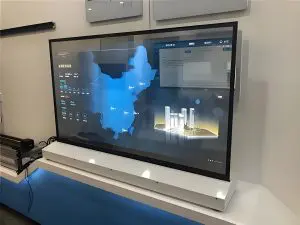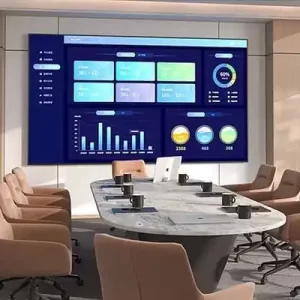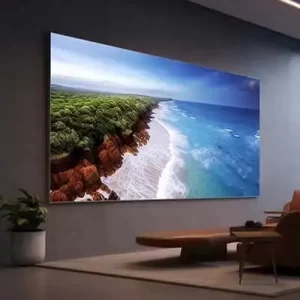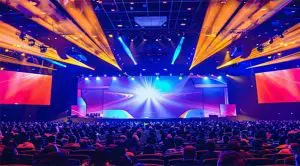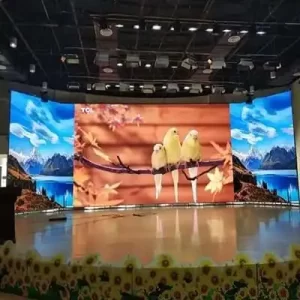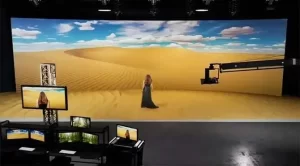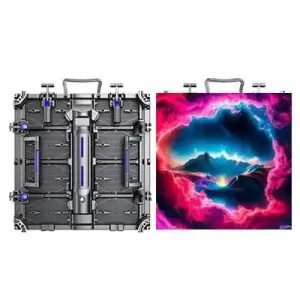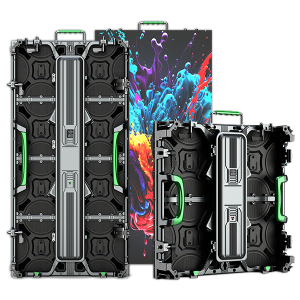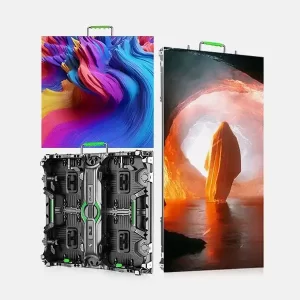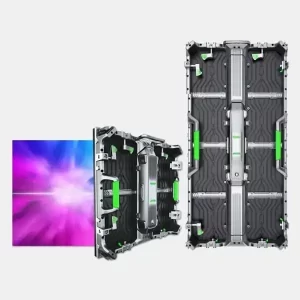A fashion show LED screen is an essential technology used to elevate the visual and interactive appeal of runway events. It provides dynamic backdrops, live feeds, and immersive visual effects that enhance the overall experience for both the audience and participants. With the ability to display high-resolution content and synchronize with the event’s theme, LED screens have become a staple in modern fashion shows.
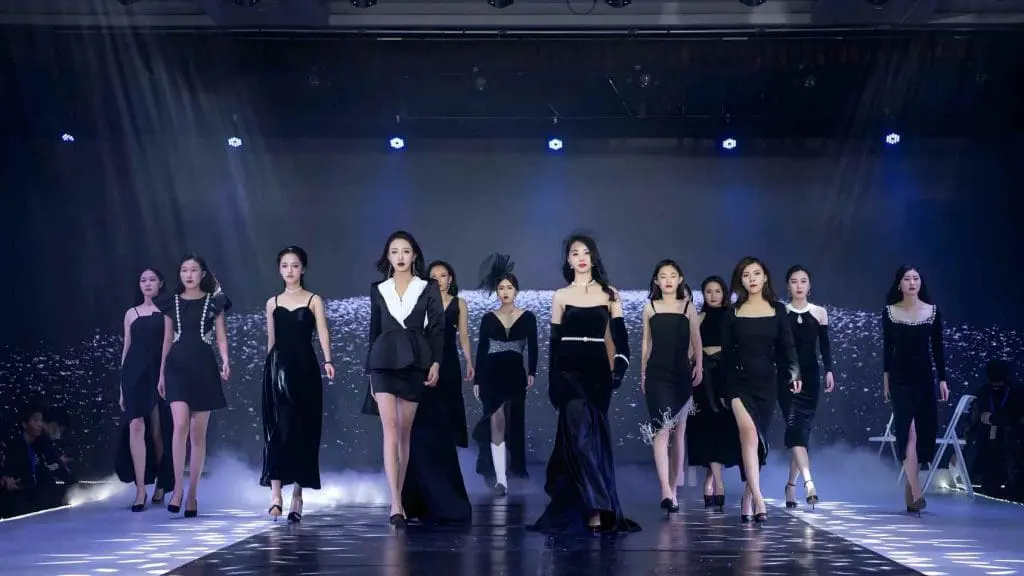
Why Use LED Screens for Fashion Shows?
LED screens are a game-changer for fashion events, offering unparalleled versatility and visual impact. Let’s explore the key reasons why they are a must-have in any contemporary fashion show.
1. Dynamic Visual Backdrops
To begin with, LED screens can display customized visuals that align with the theme of the collection, creating a cohesive and immersive experience. Designers can use animated graphics, videos, and artistic visuals to set the mood and complement their designs.
2. Real-Time Content Display
In addition, LED screens allow for live feeds of the runway to be displayed, ensuring that every attendee, regardless of their seat, gets a clear view of the models. Close-up shots of the garments can also be shown, helping to highlight intricate details that might otherwise go unnoticed.
3. Enhancing Brand Identity
Furthermore, LED screens provide a platform to showcase logos, branding, or sponsor advertisements, seamlessly integrating them into the event. This not only enhances brand visibility but also ensures sponsors receive adequate exposure.
4. Flexibility and Customization
Another benefit of LED screens is their incredible flexibility. Whether it’s a minimalist design or a futuristic vibe, LED screens can adapt to any creative vision. They can also project different content for each segment of the show, ensuring a fresh and engaging experience throughout.
5. Immersive Audience Experience
Finally, LED screens combined with lighting and sound systems create a multi-sensory experience, keeping audiences captivated. Interactive visuals, such as responsive animations, can make the show unforgettable and leave a lasting impression.
Types of LED Screens for Fashion Shows
Now that we understand the benefits of LED screens, let’s look at the different types available. Choosing the right LED screen depends on the venue, audience size, and creative requirements.
1. Indoor LED Screens
First, indoor LED screens are the most common choice for fashion shows held in enclosed venues such as convention centers, theaters, or studios. They offer:
- High resolution (P1.2–P2.5 pixel pitch) for close viewing.
- Brightness levels of 800–1,500 nits, perfect for controlled lighting environments.
2. Outdoor LED Screens
For open-air fashion shows or large-scale events, outdoor LED screens are ideal. Their main features include:
- Weatherproofing with IP65+ rating to withstand rain, heat, and dust.
- High brightness levels of 3,000–5,000 nits to ensure clear visibility under sunlight.
3. Floor LED Screens
A more creative option is floor LED screens, which can be integrated into runways. These screens:
- Feature reinforced panels to support the weight of models and props.
- Allow for custom animations, such as ripples, lights, or patterns, triggered by movement.
4. Curved or Flexible LED Screens
For fashion shows with unique stage designs, curved or flexible LED screens are a popular choice. They:
- Use flexible panels that can wrap around structures or create panoramic displays.
- Provide seamless visuals with no visible gaps, adding depth to the stage design.
5. Transparent LED Screens
Finally, transparent LED screens are perfect for modern, futuristic aesthetics. These screens:
- Allow partial visibility through the screen, creating layering effects.
- Are lightweight and ideal for creative installations.
Key Features to Consider
As you plan your fashion show, it’s important to consider several key features when selecting an LED screen. These ensure the screen meets the high demands of your event.
1. Pixel Pitch
First and foremost, consider the pixel pitch, which determines the resolution of the screen.
- For small venues, a pixel pitch of P1.2–P2.5 is ideal.
- For larger venues, P2.5–P4 is a better choice.
2. Brightness
Next, you’ll need to think about brightness levels.
- For indoor shows, brightness levels of 800–1,500 nits are sufficient.
- For outdoor shows, aim for 3,000–5,000 nits to combat sunlight glare.
3. Seamless Design
Additionally, look for modular LED panels with no visible gaps. This ensures uninterrupted visuals, which is crucial for maintaining a polished and professional appearance.
4. Portability
Another factor to consider is portability. Lightweight and easy-to-assemble screens are ideal for events that require quick setups and breakdowns, especially when time is a constraint.
5. Integration with Event Systems
Finally, ensure the screen can seamlessly integrate with the lighting, audio, and video systems. This allows for synchronized effects that enhance the overall experience.
Applications of LED Display Screens in Fashion Shows
With these features in mind, let’s explore the various creative ways LED screens can be used in fashion shows.
1. Stage Backdrops
First, LED screens are perfect for creating dynamic backdrops. They can display visuals that align with the designer’s theme, such as nature-inspired animations or futuristic graphics, adding depth and context to each collection.
2. Runway Effects
Additionally, floor LED screens can create interactive effects as models walk across the runway. This adds a modern and innovative touch, keeping the audience engaged.
3. Live Streaming and Close-Ups
Moreover, LED screens can display live feeds or close-up shots of the garments. This ensures the audience, even those seated far from the runway, can appreciate every detail.
4. Branding and Sponsorship
Another application is for branding and sponsorship. LED screens provide a professional platform to highlight brand logos, sponsor messages, or promotional videos during breaks or transitions.
5. Immersive Storytelling
Finally, LED screens can be used to create a narrative for the collection. By displaying thematic visuals, they take the audience on a visual journey, enhancing the storytelling aspect of the show.
Cost of Fashion Show LED Screens
Let’s now discuss the costs associated with LED screens for fashion shows. The total cost depends on size, resolution, and features. Below are general price ranges:
| Screen Type | Pixel Pitch | Cost per m² (USD) | Best For |
|---|---|---|---|
| Indoor LED Screen | P1.5–P2.5 | $1,000–$4,000 | High-resolution indoor visuals. |
| Outdoor LED Screen | P3–P4 | $1,000–$5,000 | Weatherproof and sunlight-readable. |
| Floor LED Screen | P2.5–P4 | $800–$4,500 | Interactive runway effects. |
| Curved LED Screen | P2–P3 | $800–$5,000 | Creative and immersive displays. |
Famous Fashion Shows Using LED Display Screens
To illustrate the impact of LED technology, let’s look at some high-profile examples:
- Victoria’s Secret Fashion Show: Used LED backdrops and floors to create dynamic, immersive stage designs.
- Dior Runway Shows: Combined transparent LED screens with creative lighting for a futuristic aesthetic.
- Louis Vuitton: Featured massive curved LED walls to display artistic visuals that complemented their collections.









